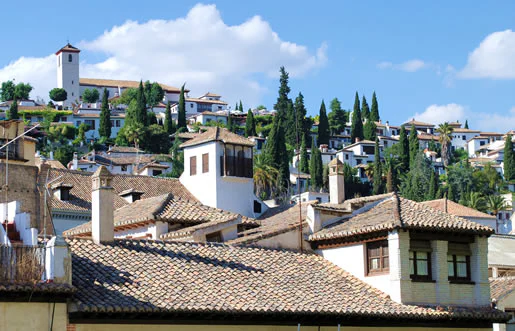Artistic introduction
The Nasrid architecture marked the end of the glorious period that started with the Umayyads in Cordoba in the 8th century. The architects of the Cordovan mosque, which was built a long time before the Alhambra, did not influence this architecture. It includes some of the typical elements of the andalusian architecture, such as the horseshoe arch with sprandel (square wide frame which envelopes the arch) and the arch scallops (arch scallop of triangular shape), as well as its own special elements such as the capitals of the columns of the Alhambra.
The greatest concern of the architects of the Alhambra was to cover every single space with decoration, no matter the size of the space. No decorative element was enough. Most of the interior arches are false arches, with no structure; they are there only to decorate. Walls are covered with beautiful and extremely rich ceramics and plasterwork. And the coverings have wooden frames that have been exquisitely carved, etc.
Even though the Muslim art bans the representation of figures, the decorating themes in the Alhambra are quite varied. The classical calligraphic decoration is used, in particular cursive and kufic inscriptions, which reproduce the words of Zawi ben Ziri (founder of the Nasrid dynasty): "Only God is Victor", and poems written by different poets of the court.
The decorative elements most often used by these architects were stylised vegetal forms, interlacing decoration and the nets of rhombuses.
The Alhambra was built with its own special type of column, which is not used in any other building. This column has a very fine cylindrical shaft, the base of which has a big concave moulding and is decorated with rings on the top part. The capital is divided into two bodies and the first one, cylindrically shaped, has a very simple decoration and a prism with a rounded-angled base and stylised vegetal forms as decoration.
One of the most impressive decorative elements used in the Alhambra is the mocarabe vault, formed by little cells or alveoluses placed one on top of the other one and which may be admired in the Hall of the Abencerrajes (Sala de los Abencerrajes) and the Hall of the Two Sisters (Sala de las Dos Hermanas).
Read more about...



